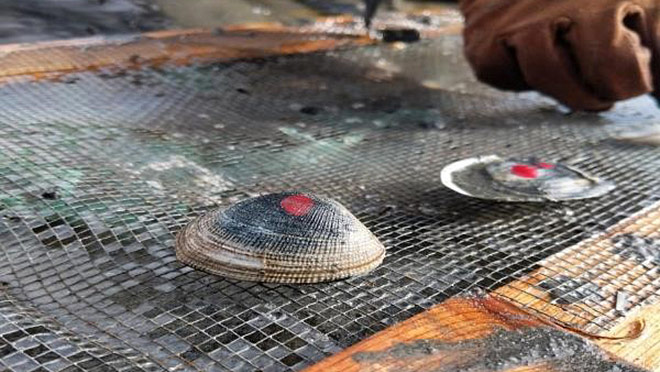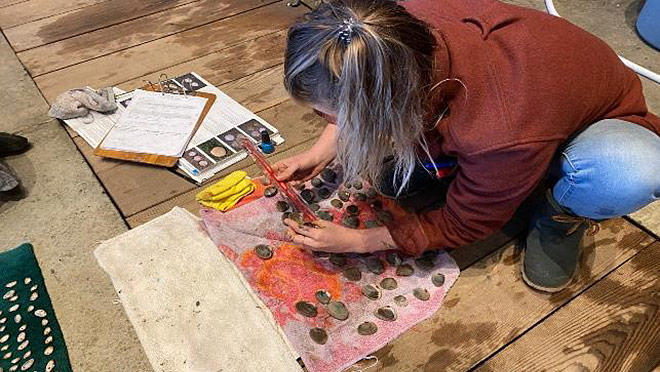Happy as a clam? We're digging deep to find out

Minimizing the impact of submarine cables
Our buried submarine cables provide power to various islands off the coast of B.C. we're working on finding ways to limit disruption to the clams that live on and around these cables.
Our natural resource specialist team recently collaborated with a local ecologist and the Central Westcoast Forest Society in Ucluelet to conduct an experiment to test best practices to protect the clams.
In a place with as many islands as B.C., it's no surprise that we have one of the largest submarine power cable networks in the world. Many of our customers live on islands, and submarine cables are essential to providing them with reliable electricity.
When we need to make repairs or replace cables, some of the work has to take place during low tide, when the shorelines are accessible. Cables can be buried up to one metre deep and when we dig up cables, we often notice algae and animals growing on or above them. Among these are clams, some of which can live for many years, including some that are culturally important to First Nations.
To minimize any damage, our natural resource specialists – part of our environment department – work with project teams to quickly set aside clams and other animals, and rebury them in the same spots when the work is complete. However, we don't know how effective this method is. Clam species found in the area include Softshell, Native Littleneck, Japanese Littleneck, Bentnose Macoma, Varnish and Butter clams.

Experiment conducted on a beach, and at the Ucluelet Aquarium
To find out, we teamed up with Dr. Barbara Beasley, a Ucluelet ecologist, the Central Westcoast Forest Society, and Ucluelet Aquarium staff to set up an experiment.
The idea of the experiment was to closely monitor how clams survive after they are dug out, exposed and reburied during cable maintenance. The experiment, conducted in January and February when tides were low and there were fewer visitors to the beach, hinged on recreating an environment similar to where clams coexist with cables.
An area was found along a beach similar to where our submarine cables are buried. Holes in the mud (called 'shows') are what we see when the tide is low, and they're our best clue as to where clams might be buried. Although many clams live beneath the mud, they still need access to water for food and oxygen. To do this, they use a long part of their body called a siphon to create a small tunnel to the surface. When the tide is low, water travels down the tunnel so that clams can stay safely below the mud and avoid predators.
To mimic what we do during submarine cable work, the clams in the test area were carefully dug up with a shovel, counted and put aside in buckets filled with water. They were identified, measured, marked, and reburied in the same spots after a few hours.
Clams like to be upside down, bottom up, so researchers reburied them that way. The research team then went back to assess the marked clams' survival after several days.
In their natural surroundings, clams move, die of natural causes, and can be sometimes dug up by predators such as bears, minks, and birds. To ensure that the study could account for this natural mortality, we also set up large tanks at the Ucluelet Aquarium and measured clam survival under the same circumstances (dug up, and reburied after a few hours).
Looking forward to some 'clamtastic' results
Our submarine cables have an average lifespan of 50 years, and some clams may live almost as long, so it's important that we learn how best to ensure these animals can safely coexist with our infrastructure. While we won't have the results analyzed until later this summer, we have already learned that depth of burial is more important to the clams' survival than the time they spend dug out.
The experiment's results will help us reduce the animals' habitat losses, an important objective of our environment strategy.